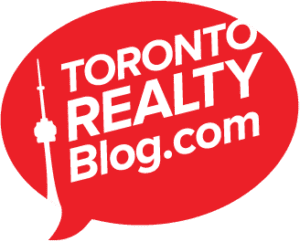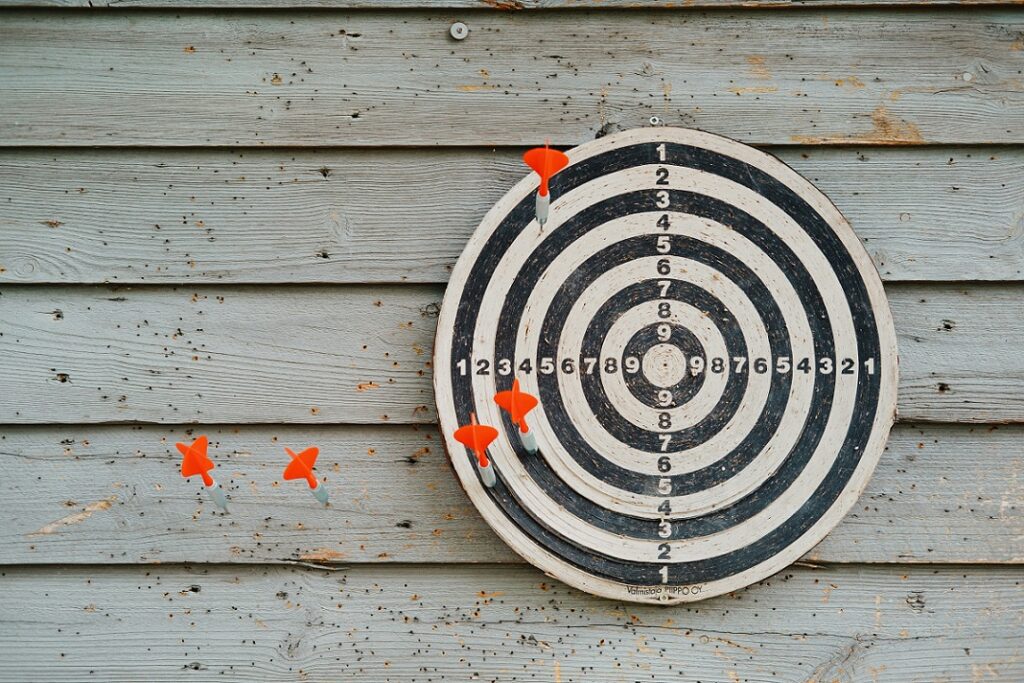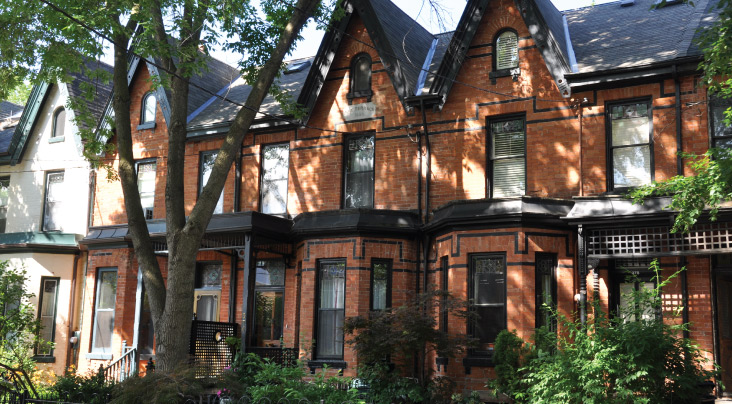It seems as though some sellers can’t decide on a firm strategy when pricing their properties, and thus they take the middle ground.
Either price at market value, or under-price in attempts to get multiple offers. But don’t split hairs…

The inspiration for this blog post can be directly traced back to one single experience I had with a midtown Toronto condo a couple weeks ago.
A property came out onto the market, priced at $529,900, in a “boutique” building that could be described as “highly sought after” or “not very popular,” depending on who you ask.
The building is home to an older demographic and doesn’t have much appeal to the young folks, and thus much of the buyer pool would immediately disregard this new listing. It could be argued that those who like it, like it a lot, but it’s still somewhat of a mid-tier listing, at best.
The sellers and the listing agent set an offer date, and let it be known that they expected multiple offers on the property.
Some agents announce expectations of multiple offers in attempts to actually attain multiple offers, and other agents play it close to the chest and encourage everybody to bring an offer, no matter what the price. In my experience, the latter approach works best, and the former approach is based purely on Realtor-arrogance and self-satisfaction, and merely drives potential offerees away.
As you might assume, offer day came and went, and they didn’t receive an offer on the property.
So they promptly took the property off the market, and re-listed at $544,900.
This is where I think they’re splitting hairs.
For a moment, let’s ignore the ridiculousness of re-listing at a HIGHER price after nobody wanted to buy the property in the first place. I think we’ve covered this ad nauseum, and it’s a topic for another day.
What I’m trying to get at here is the fact that the price of real estate is so hard to pin-point, and when you have a seller raise the price by 2.8% after failing to obtain offers, they’re just demonstrating how little they know about current market conditions.
The efficient market theory asserts that markets are “informationally efficient,” and that one cannot consistently achieve returns in excess of average market returns. While this theory mainly refers to financial markets, I’ve always maintained that it can be applied to the real estate market – at least while the market is red hot.
If you divide this theory into two parts, you have the following:
1. The market is informationally efficient, and this is reflected in the pricing of financial instruments.
2. It is impossible to achieve returns in excess of the ‘average’ market return.
While I don’t believe the second part can be applied to the real estate market (since we see ridiculous sale prices every day), I do believe that the first point holds true. If you believe that “a house is worth what somebody’s willing to pay for it,” then you can’t help but agree that the real estate market is efficient.
Unlike the financial markets where the price of a share of stock is easily identifiable, the price of a house or condo is not.
It is the market and its buyers and sellers that determine the price of real estate.
If this is the case, then it’s almost impossible for a buyer, seller, or Realtor to pin-point the exact price of a house or condo before it sells. That’s why I always quote a range – within 2-3%, and suggest a couple of different pricing strategies.
In the case of the condo above, the participants had no clue what they were doing. They refused to accept current market conditions and feedback, and they’ve crippled themselves by re-listing at a higher price. All that does is tell the market, “We’re stubborn and very difficult to deal with. If you want to show our property, just know that it might backfire and your buyer-client will likely blame you in the end.”
The mistake here might have been on the part of the listing agent who promised the seller multiple offers.
Or, the mistake might have been on the part of the seller who said “I’ll only accept $544,900.”
But either way, it was a mistake to list the property at $529,000 in the first place if the seller wanted or, “needed” (the worst word in real estate), $544,900.
$15,000 is a lot of money if it’s sitting in a pile in front of you, but in the context of a $530,000-ish condo, it’s really not. It’s 2.8% of the total.
The sellers of this condo are trying to split hairs, but in the process, they’re making it impossible to sell what is likely their largest asset.
When pricing your house or condo, you can’t split hairs. You can’t tread the middle ground, and you really only get one chance to make a first impression on the market.
In this case, the sellers could have “under-listed” at $499,000 and tried to bring in some of the sub-$500K buyers, and then attempt to solicit multiple offers. Or, they could have priced at $549,900 and waited it out. If that’s the price they truly wanted, and if they truly wouldn’t settle for less, then that’s likely the strategy they should have used.
But, they didn’t. They split hairs over the listing price, and they didn’t have the risk-tolerance to price low enough to try and solicit multiple offers.
Their asking price was fair market value, and when they didn’t receive the bounty they so coveted, they got upset, and like a kid that picks up his hockey net and goes home, they did the real estate equivalent by raising the price.
No buyer wants to get involved with a property where the seller has raised the price. There’s a psychological barrier to caving to a stubborn seller who insists on obtaining more than is viable. This isn’t the same thing as paying more than the list price – because it happens all the time when there are multiple offers on an under-listed property. But rather, this is about paying more than the listing price, when nobody else would even pay the list price itself!
No buyer, seller, or Realtor is informed enough to pin-point the value of a house or condo to the exact dollar. It’s just not possible.
Even if you have a condo – Unit #1805, where units #1705 and #1905 – the exact same models, have both sold for $310,000, you still have to examine the differences in features and finishes, which could make the difference of several thousand dollars. You can come close, but you can never get down to the exact dollar like you can with a share of stock.
I worked with a buyer a while back whose friend came in from Texas, and was astounded to hear that I though 22 days on the market was a “long time.” She said back home in Gunnsville, it usually takes 4-5 months just to get an offer!
But we’re not in Texas; we’re in Toronto. We’re in a hot market, and we have been for quite some time. You get one chance to do everything right when selling your property, and it amazes me when people ruin their chance by taking a property off the market to list it 2.8% higher. That’s money they will never get, and it just means that their condo will take another month to sell; assuming, of course, that they drop the price in a couple weeks or entertain (much) lower offers.
Einstein may have slit the atom, but he was a bit smarter than the rest of us.
Sellers who try and split hairs when pricing their properties are getting a little too cute, and in the end, they’re only hurting themselves…































Calgary Realtor
at 12:29 pm
A key point here – the message they have sent to interested buyers by upping their price on the re-list.
You hit the nail on the head….“We’re stubborn and very difficult to deal with. If you want to show our property, just know that it might backfire and your buyer-client will likely blame you in the end.”
While that may impact the enthusiasm of an agent to show this property, it has to set off alarm bells for the buyers themselves.
Good post.